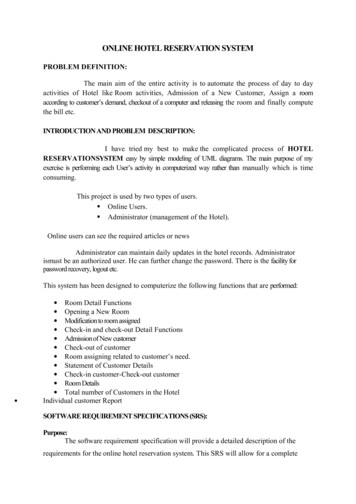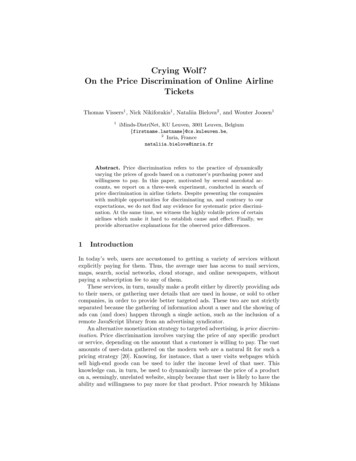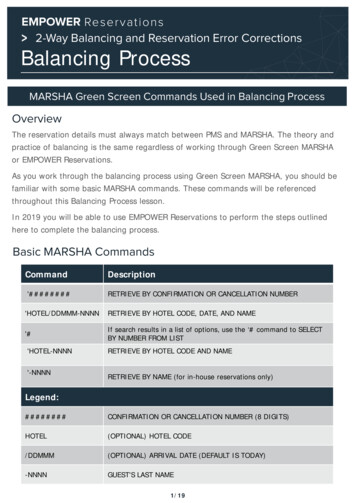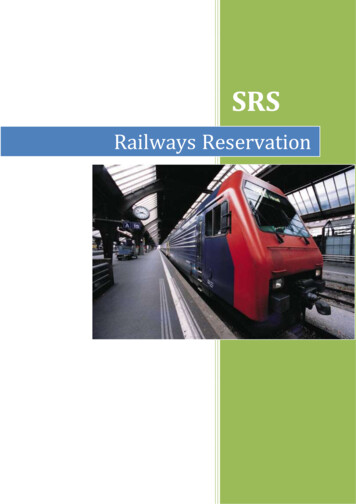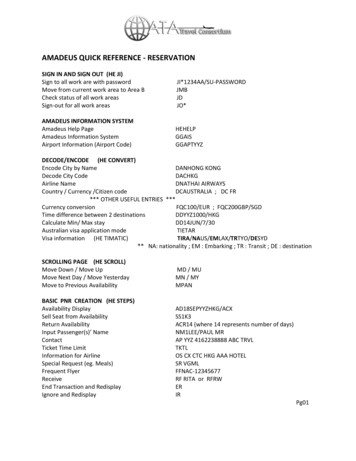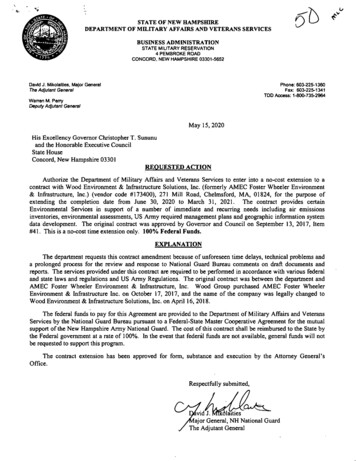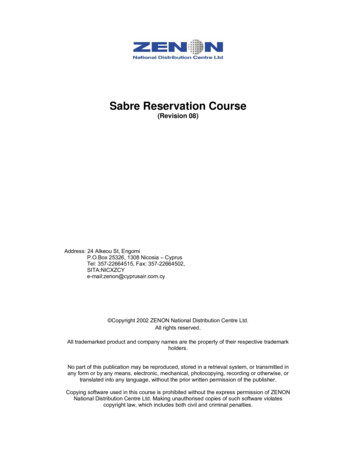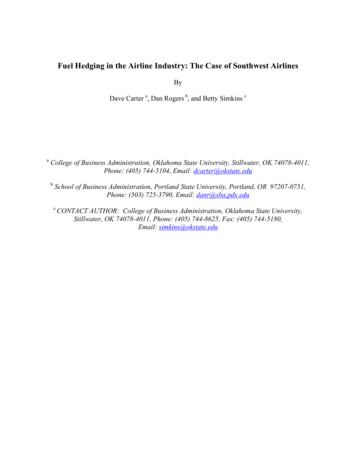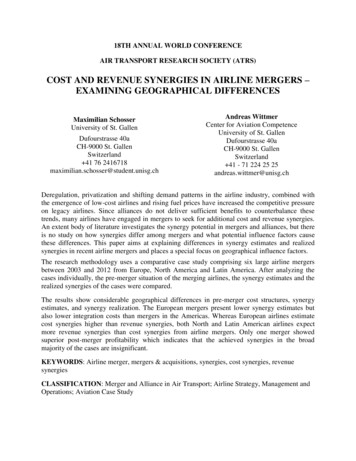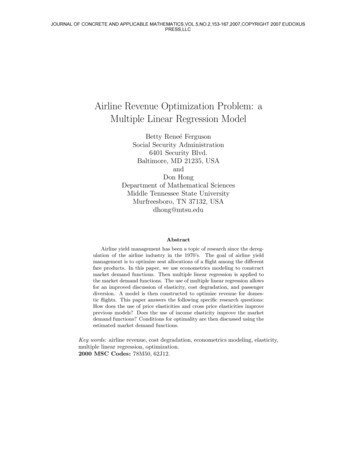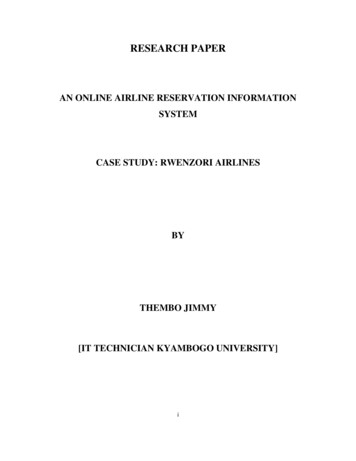
Transcription
RESEARCH PAPERAN ONLINE AIRLINE RESERVATION INFORMATIONSYSTEMCASE STUDY: RWENZORI AIRLINESBYTHEMBO JIMMY[IT TECHNICIAN KYAMBOGO UNIVERSITY]i
TABLE OF CONTENTSLIST OF TABLES . ivLIST OF FIGURES . viLIST OF ABBREVIATIONS. viiiABSTRACT . ixCHAPTER ONE .11.0 Introduction .11.1 Background of the Study.11.2 Problem statement .21.3 Objectives .21.3.1 General Objective .21.3.2 Specific Objectives .21.4 Scope of the Study .31.5 Significance of the Study .3CHAPTER TWO .4LITERATURE REVIEW .42.0.Introduction .42.1 History of Airline Reservation Information System .42.2Reservation Information Systems .52.3 Components of Reservation Information Systems .62.3.1 Hardware.72.3.2 Software .72.3.3 Data .72.3.4 People .72.3.5 Procedures.82.3.6 Database .82.4 Types of Reservations in Reservation System .82.5 Types of Information System .92.5.1 Transaction Processing System (TPS).9ii
2.5.3 Management Information System (MIS) .92.5.4 Decision-support systems (DSS). 102.5.5 Executive Support System (ESS) . 102.6 Application of Reservation Systems . 102.7 Advantages of Reservation Information Systems . 102.8 Limitations of Reservation Information System . 11CHAPTER THREE . 12METHODOLOGY. 123.0 Introduction . 123.1 System Study and Analysis . 123.1.1 Interviews. 123.2.2 Questionnaire . 133.3 Requirements Determination . 143.3.1 Requirements Analysis . 143.4 System Design . 143.5 System Implementation. 153.6 System Testing . 153.7 System Validation . 16CHAPTER FOUR . 17SYSTEM DESIGN, ANALYSIS AND IMPLEMENTATION. 174.0 Introduction . 174.1 System Design Objectives. 174.2 System Design . 184.2.1 Logical design . 184.2.2 Conceptual design . 184.2.3 Physical design . 184.3 Functional Requirements . 194.4 Non-functional requirements . 194.5 Data Flow Diagrams . 204.5.1 Context Diagram for Airline Reservation System . 22iii
4.5.3 Level One Data Flow Diagram for Reservation Process. 234.6 System Component Interactions. 234.7 Database design . 244.7.1 Entities . 244.7.3 An Entity Relationship Diagram for Airline Reservation . 254.7.4 Database Conceptual Design . 264.7.5 Table Attribute Description (Physical Design) . 264.8 System Implementation. 294.8.1 System Users . 304.8.2 Implementation Requirements . 314.8.3 System Execution Sequence . 31CHAPTER FIVE. 44FINDINGS, CONCLUSION AND RECOMMENDATIONS . 445.0 Introduction . 445.1 Findings . 445.2 Conclusion . 455.3 Conversion . 465.4 Recommendations. 46References . 47APPENDICES . 49Appendix A: Interview Guide Questions . 49Appendix B: Questionnaire . 50LIST OF TABLESiv
Table 1: Showing Passenger‟s details . 27Table 2: Showing Flight details . 27Table 3: Showing Payment details . 28Table 4: Showing Journey details . 28Table 5: Showing Schedule details . 29v
LIST OF FIGURESFigure 2.1: Showing a global distribution system .6Figure 2.2: Five Stages of Transaction Processing System.9Figure 3.1: The system study and design model. 12Figure 4.1: Showing a context diagram for a reservation system . 22Figure 4.2: Level one data flow diagram for the reservation process . .23Figure 4.3: Showing interconnectivity of the different system components . 24Figure 4.4: Showing an entity relationship diagram for airline reservation system . 25Figure 4.5: Showing the data base logical design for an airline reservation system . 26Figure 4.6: Administrator use case diagram . 30Figure 4.7: Customer use case diagram . 30Figure 4.8: Showing a Guest User case diagram . 31Figure 4.9: Showing the Welcome Interface . 32Figure 4.10: Showing Customer Registration Form . 32Figure 4.11: Showing the Customer Search Interface . 33Figure 4.12: Showing a Full Customer Record Interface. 34Figure 4.13: Showing Journey details Interface . 35Figure 4.14: Showing Rwenzori Airlines Schedules . 35Figure 4.15: Showing flight Reservations, Ticket Reservation and Cancel Interface . 36Figure 4.16: Showing a Flight Booking Form. 36Figure 4.17: Showing Ticket Booking Form . 37Figure 4.18: Showing Ticket detail interface . 38Figure 4.19: Showing ticket Cancelation Interface. 38Figure 4.20: Showing Customer Contact us Page/Interface. 39vi
Figure 4.21: Showing Administrators‟ Password Interface . 40Figure 4.22: Showing Administrators Home Interface . 40Figure 4.23: Showing change password change interface . 41Figure 4.24: Showing database interface . 41Figure 4.25: Showing flight schedule interface . 42Figure 4.26: Showing journey entry form . 42Figure 4.27: Showing add ticket interface. 43Figure 4.28: Showing flight information interface . 43vii
LIST OF ABBREVIATIONSARS:Air Reservation SystemCASE:Computer-Aided Software EngineeringCRS:Computer Reservation SystemDB :Data BaseDBMS :Database Management SystemDDL :Data Definition LanguageDFD :Data Flow DiagramDML:Data Manipulation LanguageDSS:Decision Support SystemsEG:Example GivenERD:Entity Relationship DiagramFK:Foreign KeyGB:Giga ByteGDS:Global Distribution SystemGUI:Graphical User InterfaceHTML:Hypertext Markup LanguageMB:Mega ByteMHz:Mega HertzMIS:Management Information SystemsPHP:Hypertext PreprocessorPK:Primary KeyPSS:Passenger Service SystemRAM:Random Access MemoryTCP/IP:Transmission Control Protocol/ Internet ProtocolTPS:Transaction Processing Systemsviii
ABSTRACTAirline Reservation Systems (ARS) used to be standalone systems. Each airline had its ownsystem, disconnected from other airlines or ticket agents, and usable only by a designatednumber of airline employees. Travel agents in the 1970s pushed for access to the airlines'systems. Today, air travel information is linked, stored, and retrieved by a network of ComputerReservations Systems (CRS), accessible by multiple airlines and travel agents.This report is a summary of the study that was undertaken to design and implement an airlinereservation system. The airline reservation system designed in this project was developed usingphp, java script and html as the programming languages and Mysql as the database Managementsystem. The researcher reviewed the literature of reservation systems in chapter two andexplored the advantages and limitations of reservation system in real life situations.The researcher used interviews and questionnaire methods during the data collection phase, thesedata collection methods helped the researcher to better understand the existing system in use.Case tools and data flow diagram were used during the development process to simulate theprocess of airline reservation and ticket booking. The outcome of the study was an online airlinereservation system tested and implemented in the case study Rwenzori Airlines to book, scheduleand reserve flights.ix
DEFINITION OF KEY TERMSAirline Industry (Air Transport Industry): This is an area of commerce that uses aircraft totransport people, cargo, and mail. The air transport industry encompasses flights of commoncarriers (government-certified companies that offer cargo and passenger services to the public)and general aviation (private aircraft used for recreation or businessReservation: The written record or promise of an arrangement by which accommodations aresecured in advance.System: This is any collection of component elements that work together to perform a task. Incomputer science, System is used in a variety of contexts. A computer System is a hardwaresystem consisting of a microprocessor and allied chips and circuitry, plus an input device(keyboard, mouse, disk drive), an output device (monitor, disk drive), and any peripheral devices(printer, modem).Deregulation: The act of freeing from regulation (especially from governmental regulations).Network: In computer science, a network is a system used to link two or more computers.Network users are able to share files, printers, and other resources; send electronic messages; andrun programs on other computersComputerize: To control a function, process, or creation by a computer.x
CHAPTER ONE1.0 IntroductionIn science and technology, the desire for improvement is a constant subject which triggersadvancements. This is visible in every ramification and the airline industry is not an exemption.Airline reservation systems were first introduced in the late 1950s as relatively simple standalonesystems to control flight inventory, maintain flight schedules, seat assignments and aircraftloading. Today modern airline reservation systems are comprehensive suites of products toprovide systems that assist with a variety of airline management tasks and service customerneeds from the time of initial reservation through completion of the flight. Winston, (1995) [25]The World Wide Web has become tremendously popular over the last four years, and currentlymost of the airlines have made provision for online reservation of their flights. The Internet hasbecome a major resource for people looking for making reservations online without the hassle ofmeeting travel agents by implementing an online reservation system this ensures that reservationare not only generated by the airline own staff but also by any travel agent using a GlobalDistribution system or other airlines that have a multilateral Interline Traffic Agreement with theairline Winston, (1995) [25].A Computer Reservations System is a computerized system used to store and retrieveinformation and conduct transactions related to travel. Computer reservation systems areclassified as Passenger Service Systems (PSS) which handles a series of critical functions for theairline. For an Airline, the reservation system is a mission critical system that should use thelatest state of the art technology to provide for all flight reservations on a robust platform, whichis flexible and can be adapted to any style of airline. Secure and stable systems are vital to theairline industry which is why companies spend many years designing an architecture specificallysuited to the nature of the airline industry which often requir
and general aviation (private aircraft used for recreation or business Reservation: The written record or promise of an arrangement by which accommodations are secured in advance. System: This is any collection of component elements that work together to perform a task. In c
